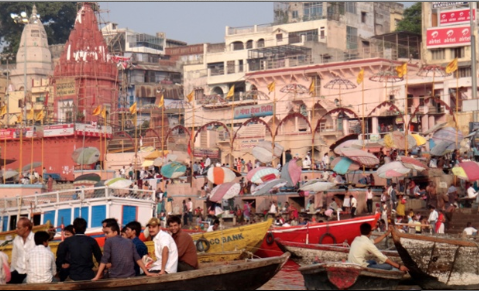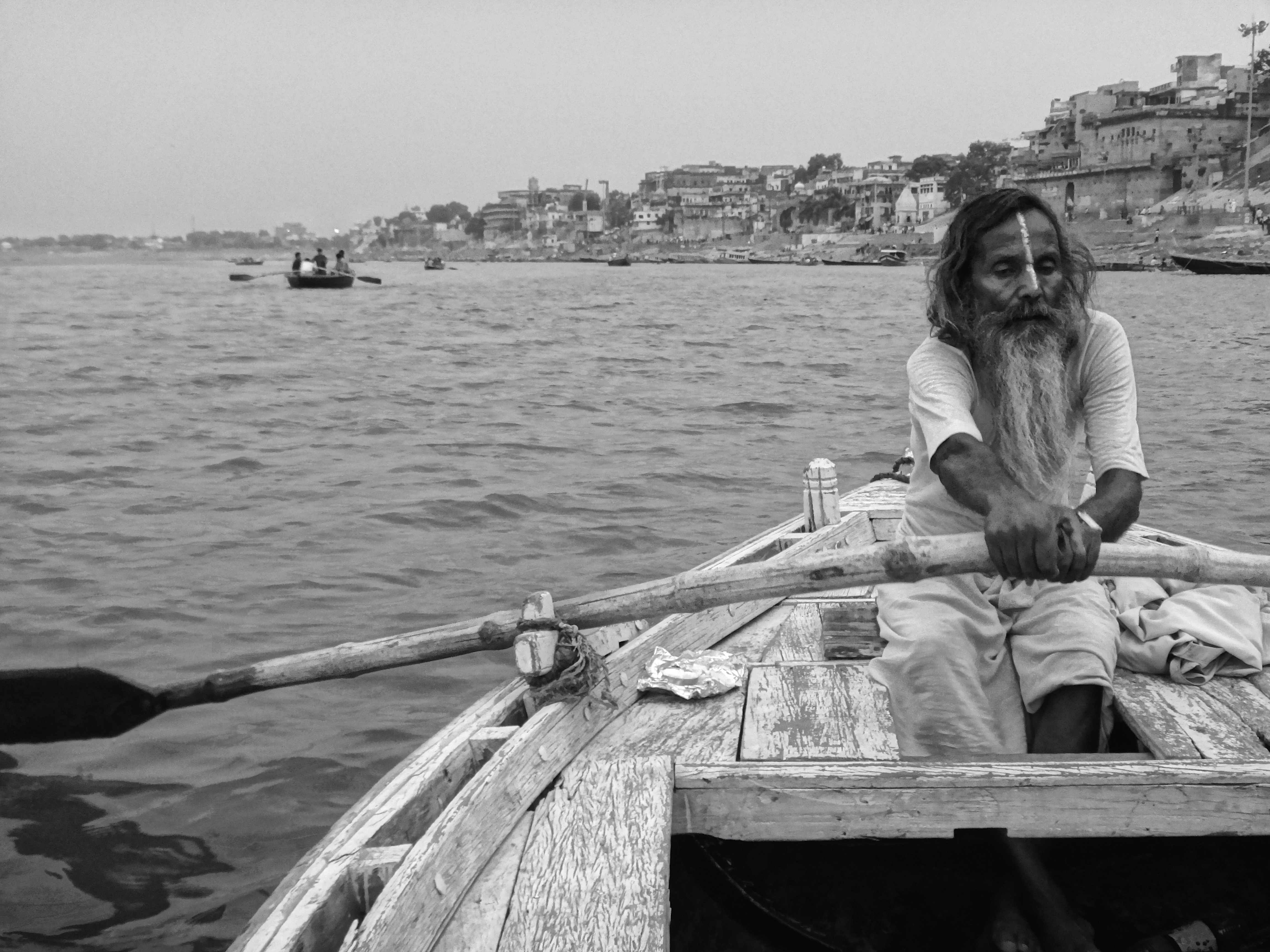
It's a few hours before sunrise and already the banks of the Ganges river in Varanasi are lined with meditators, yogis and people offering prayers. For many, this opportunity to pay respect to the Ganges — Ganga in Hindi — is a morning ritual. For others, this is the end of a long pilgrimage, a cherished time to be with the holy waters. Others are here because a loved one's corpse will soon be burned at nearby Manikarnika Ghat; they are asking the Ganga to wash away sins and take care of the deceased.
As the sun rises, flecks of light on the surface of the Ganga reveal layers of sweet wrappers, polystyrene cups and plastic bags filled with flowers.
The Ganges, originating high in the Himalayas and draining into the Bay of Bengal, helps sustain an estimated 10% of the world's population and yet it's become more renowned for its pollution.
When news breaks of the Ganges, it is typically to report how the Yamuna, a major tributary to the Ganges, is buried under a layer of industrial foam or contains faecal coliform bacteria at half-a-million times the Indian recommended bathing limit; about how the untreated sewage of 118 towns is discharged into the Ganges; or about how it is becoming less of a river and more of a toxic waterway.
In the past, clean-up initiatives have failed and many now believe Indian prime minister Narendra Modi's promise to tackle pollution in the Ganges has mostly served as a clever political move.
For Sadhvi (Sadhviji) Bhagawati Saraswati of Ganga Action Parivar (GAP), a non-profit organisation launched in April 2010 by the Dalai Lama and Pujya Swami Chidanand Saraswati, the answer lies in collaboration.
"The Ganga needs and deserves serious cross-sector collaboration that involves the government and scientists, but also faith leaders who have the networks and the capacity to shape perspective through story rather than shaming," Sadhviji says.
As the Ganga is the ultimate life-giving and self-cleaning goddess for Hindus, the majority who worship her view the very idea — that their ornate offerings (to receive her blessing) can harm her — as absurd, even sacrilegious. This widespread belief bolsters a cultural norm whereby it's generally acceptable to use the Ganges as a rubbish bin; people will often throw their trash in the river even when a dustbin is within arm's reach.
This is where GAP comes in. Through its creation of, or participation in, conferences, summits, strategic partnerships and even international yoga festivals, GAP has bridged the divide between science and religion. Whether it has invited local and international environmental scientists to discuss solutions or is hosting the likes of Harvard Divinity School or Prince Charles, the focal point is the health of the Ganges.
It is, of course, seeking increased awareness of the problem as well as donations to help pay for existing clean-up efforts and its Global Interfaith Wash Alliance. However, its ultimate goal is to create sustainable, impact-driven collaborations that are wins for all parties.
"People will starve themselves, they will skip meals to save rupees and use those rupees to buy flowers to offer Ganga. But in offering those flowers they also offer the plastic bag they're wrapped in," Sadhviji says. "It's easy to look at this and think 'Oh, they don't care'. Clearly they care, they care immensely. Our job is to add another layer to their way of caring."
On some level Sadhviji believes this idea of "care" is purely a semantic issue, and that to get to the heart of it we must understand some dimensions of Hindu belief concerning the Ganges. This is where she sees local faith leaders, an important though often dismissed segment of the collaboration, bolstering advocacy efforts on issues of climate change and pollution.
Sadhviji says: "They're a part of this culture so they're able to pivot perspectives and reframe stories in ways that influence people. Rather than say 'You are harming Ganga by throwing your plastic into it' they say 'Plastics aren't biodegradable, it breaks into tiny pieces and can kill our cows, fish and birds'. It seems a minor change but it's proven incredibly effective in our awareness efforts.
"Governments can lay sewer lines, install world-class treatment plants and issue the harshest sanctions, but unless we engage faith groups we will still have an enormous number of individuals who are carrying their trash to Ganga."
As a result of this shift in semantics, Sadhviji said she's seen countless polluters become non-polluters: "Hinduism is inextricably linked to caring for animals, plants and the natural world. When the pollution conversation is shaped in this manner, people immediately realise the way their actions go against their deepest values. This is when they change."
On the government's role, GAP highlights two areas that need more attention: maintenance of existing infrastructure and the implementation of existing sanctions. It believes that treatment programmes must be developed and maintained to ensure solid waste is not dumped into the Ganges, and that industry sanctions at the municipal level must be enforced to put an immediate halt to toxic chemical runoff.
"Scientists bring innovative solutions on how to manage the waste generated, the government brings the infrastructure to implement the scientist's innovations and faith leaders help people see the other sides to the story. It's fascinating to watch all of these groups come together," says Sadhviji.
"We've seen the disastrous consequences to our Mother Ganga when there is not collaboration. Our multi-pronged work is rallying people around two central concepts: that this is no longer acceptable and that we need their help."

Education Resource
Meet the Journalist: Cameron Conaway
Cameron Conaway talks about the importance of the Ganges, also called the Ganga and considered a...






